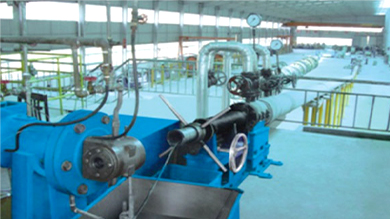9 月 . 08, 2024 13:32 Back to list
threaded ball valve
Understanding Threaded Ball Valves A Key Component in Fluid Control Systems
Threaded ball valves are essential components in various industrial applications, serving as reliable devices for controlling the flow of fluids. With their simple design and efficient operation, these valves are widely used in plumbing, heating, and water distribution systems, allowing for easy regulation and shut-off of flow.
A threaded ball valve consists of a spherical disc, known as the ball, which is positioned within a valve body. The ball has a hole – or port – through its center, allowing fluid to flow when the valve is open. To control the flow, the valve is rotated 90 degrees. When the hole aligns with the inlet and outlet ports, the valve is open; when it is perpendicular to the flow direction, the valve is closed. This straightforward operation is a significant advantage of ball valves, making them user-friendly and efficient.
The primary feature that distinguishes threaded ball valves from other types is their method of connection. Threaded valves have male or female threads on their ends, which allows them to be easily screwed into existing piping systems. This threaded connection makes installation quick and straightforward, requiring minimal tools and expertise. It is particularly beneficial in applications where space is limited, as traditional flanged or welded connections might not be feasible.
threaded ball valve

One of the key advantages of threaded ball valves is their ability to handle high-pressure and high-temperature applications. They are typically made from durable materials such as stainless steel, brass, or PVC, which provide excellent resistance to corrosion and wear. This durability ensures long-term reliability, reducing the need for frequent replacements and repairs. Furthermore, ball valves are known for their tight sealing capabilities; when closed, they prevent any leakage, which is crucial for maintaining system efficiency and safety.
Another important aspect to consider is the variety of sizes and configurations available. Threaded ball valves come in different diameters and can accommodate various pipe sizes, making them highly versatile for any fluid control requirement. Additionally, some models are equipped with extra features such as locking mechanisms or pneumatic actuators, enhancing their functionality in automated systems.
However, despite their many benefits, it's essential to install threaded ball valves correctly to avoid issues such as cross-threading or damage to the valve seat. Proper torque should be applied when tightening the valve, and regular maintenance checks should be conducted to ensure functionality and identify any potential leaks or wear.
In conclusion, threaded ball valves are indispensable in fluid control systems due to their simplicity, efficiency, and reliability. Their threaded connections make them easy to install and maintain, while their robust design allows them to withstand challenging conditions. As industries continue to evolve, the demand for reliable and efficient flow control solutions like threaded ball valves will remain crucial for ensuring the smooth operation of various processes. Understanding their functionality and benefits is essential for anyone involved in fluid management and engineering.
Share
-
Understanding the Differences Between Wafer Type Butterfly Valve and Lugged Butterfly ValveNewsOct.25,2024
-
The Efficiency of Wafer Type Butterfly Valve and Lugged Butterfly ValveNewsOct.25,2024
-
The Ultimate Guide to Industrial Swing Check Valve: Performance, Installation, and MaintenanceNewsOct.25,2024
-
Superior Performance with Industrial Swing Check Valve: The Essential Valve for Any SystemNewsOct.25,2024
-
Industrial Swing Check Valve: The Ideal Solution for Flow ControlNewsOct.25,2024
-
You Need to Know About Industrial Swing Check Valve: Functionality, Scope, and PerformanceNewsOct.25,2024